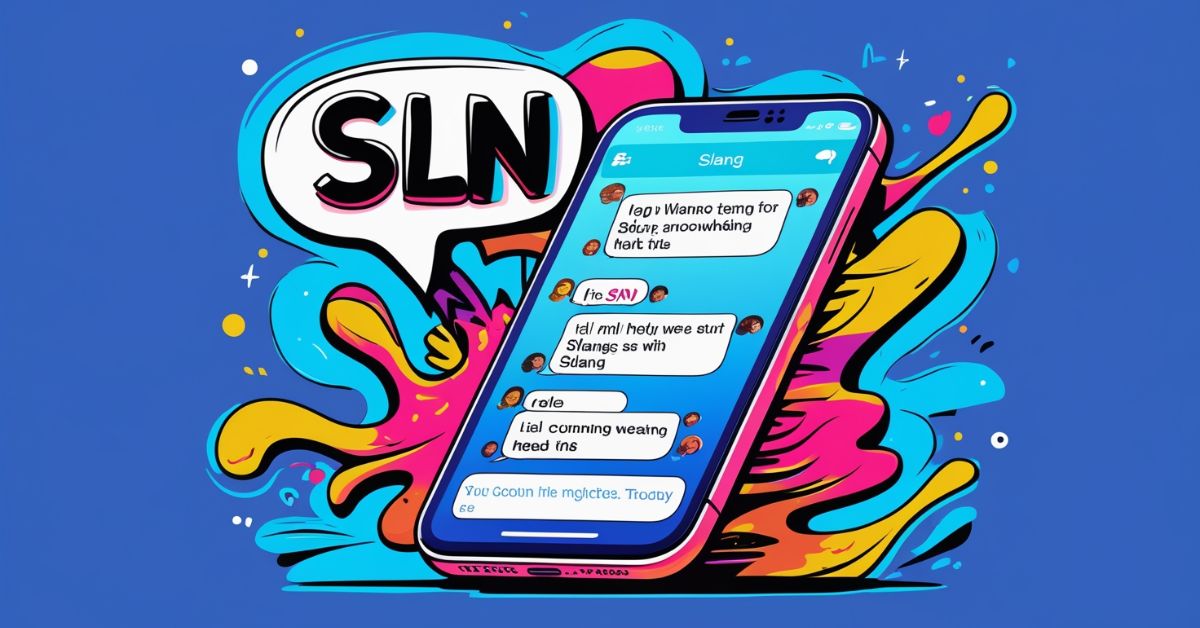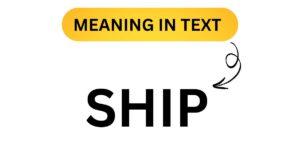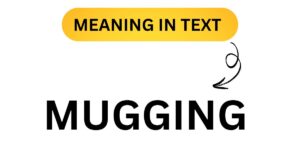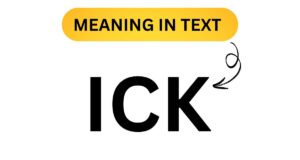If you’ve come across the term slang SN meaning in text and found yourself scratching your head, you’re not alone! With new slang terms popping up every day, it can be tough to keep track. But don’t worry, you’re about to get the lowdown on one of the most popular acronyms teens are using online today.
Whether you’re looking to decode a message from your teen or simply stay updated on the latest digital lingo, understanding SN meaning in text is a must. So keep reading to get the full scoop on this trendy acronym and how it’s changing the way we communicate!
What does sn mean texting
“SN” in texting stands for “Say Nothing.” It’s a popular slang term used in two main ways.
- Acknowledging Gratitude: When someone thanks you, you can reply with “SN” to say “no need to mention it” or “don’t worry about it.”
- Example: “Thanks for helping me!” “SN, it was no problem.”
- Agreement or Acknowledgment: It can also mean “I agree” or “I understand” when responding to someone’s statement.
- Example: “We need to fix this issue.” “SN, I agree.”
Sn meaning in chat
In chat, “SN” typically means “Say Nothing.” It’s used in two main ways:
- To dismiss gratitude: If someone thanks you, you can respond with “SN” to indicate that there’s no need for thanks or further mention.
- Example: “Thanks for helping me out!” “SN, it was nothing.”
- To show agreement or acknowledgment: It can also be used to show that you agree with or understand what someone is saying.
- Example: “We need to finish this project quickly.” “SN, I agree.”
Examples
Acknowledging Gratitude:
- Person A: “Thanks for covering my shift today!”
- Person B: “SN, happy to help.”
Agreement or Acknowledgment:
- Person A: “We should meet up tomorrow to discuss the plan.”
- Person B: “SN, I’m on board.”
Dismissal of Apology:
- Person A: “Sorry I didn’t reply sooner!”
- Person B: “SN, it’s all good.”
How to Speak with Children about SN meaning
Talking to your children about SN meaning in texting can be a great opportunity to understand their communication style and help them navigate the digital world. Here are a few tips:
- Start with Context: Explain how teen slang and acronyms like “SN” are part of how language evolves, especially in digital communication. Tell them that it’s important to understand slang to avoid misunderstandings.
- Ask Questions: Encourage your child to explain slang terms they use. This will help you understand their language better and open up conversations about respectful and clear communication.
- Emphasize Context: Let them know that SN can mean different things depending on the situation, and it’s important to use it appropriately. Explain that using acronyms like SN is fine with friends, but might not be clear in more formal or serious conversations.
- Keep Communication Open: Stay curious about new terms and encourage your child to share what’s trending. This shows them you’re interested in their world and helps keep the lines of communication open.
Test How Well You Understand Teen Slang
Testing your understanding of teen slang can be a fun way to connect with your child and stay updated on how language is evolving. Here are a few questions to help you gauge how well you understand current slang like “SN” and other popular terms:
1. What does “SN” mean in texting?
- a) Sorry Not
- b) Say Nothing
- c) Super Nice
- d) Silent Note
2. If someone uses “SN” in response to “Thank you for helping me,” what is their intention?
- a) They are annoyed by the gratitude.
- b) They’re acknowledging that no thanks are needed.
- c) They’re suggesting you don’t thank them.
- d) They’re saying it was a big deal.
3. What is a common reason teens use acronyms like “SN” in texts?
- a) To confuse their parents.
- b) To communicate quickly and efficiently.
- c) To make their messages longer.
- d) To appear formal.
4. How does “SN” differ in meaning depending on the context?
- a) It only means “Sorry, No.”
- b) It can either express gratitude acknowledgment or agreement.
- c) It’s always used to apologize.
- d) It never changes meaning.
Answers:
- b) Say Nothing
- b) They’re acknowledging that no thanks are needed.
- b) To communicate quickly and efficiently.
- b) It can either express gratitude acknowledgment or agreement.
What to do if you recognize your child’s dangerous slang
. Stay Calm and Avoid Overreacting
- When you hear slang that concerns you, stay calm. Reacting with anger or panic might make your child shut down. Approach the situation with understanding and curiosity instead.
2. Ask What It Means
- Ask your child what the slang means and where they learned it. This opens up a dialogue without judgment. Teens may not always understand the full implications of the words they use.
3. Explain the Risks
- Educate your child about the potential dangers of the slang they’re using. Explain how certain terms may be associated with harmful behaviors, such as drug use or inappropriate content, and the risks involved.
4. Set Clear Boundaries
- Let your child know which types of slang are unacceptable and explain why. Establish clear rules about respectful and responsible language, especially in online spaces.
5. Use Parental Control Tools
- Utilize parental control apps or monitoring software to track and flag any concerning slang or keywords related to risky behaviors. Set up keyword alerts to get notified of inappropriate terms.
6. Encourage Open Communication
- Foster an open line of communication. Let your child know that they can always come to you if they come across or hear anything troubling, whether it’s slang or something else.
7. Monitor Online Activity
- Stay informed about the platforms your child uses and what kind of slang or communication is common there. Encouraging safe and responsible use of social media helps protect your child from online dangers.
8. Talk to Their Friends’ Parents
- If the slang seems to be part of a wider trend among your child’s friend group, consider talking to their friends’ parents to ensure everyone is on the same page about language and behavior.
Conclusion
In conclusion, understanding and monitoring teen slang is essential for fostering open communication with your child and ensuring their safety in the digital world. Acronyms like “SN” may seem harmless at first, but it’s important to stay informed about the meanings and contexts in which they are used.
By staying engaged with your child’s digital communication, discussing slang terms openly, and setting clear boundaries, you can help them navigate their online interactions responsibly.
Remember, staying proactive, using tools like parental control, and encouraging respectful dialogue will ensure that your child communicates safely and confidently.









